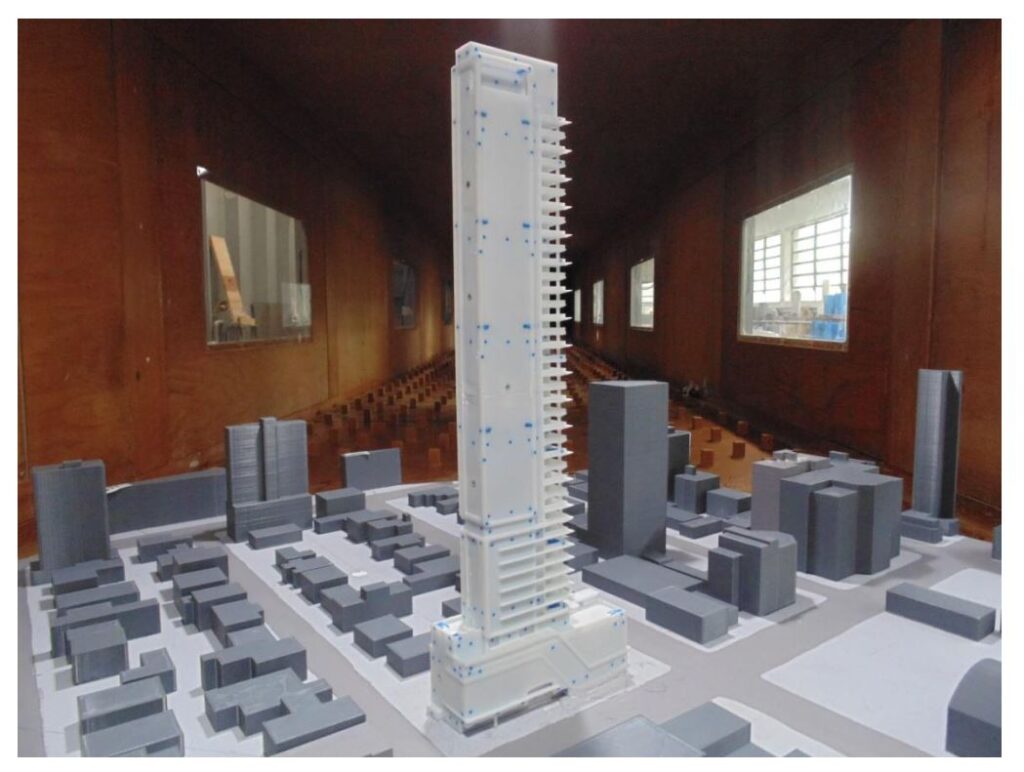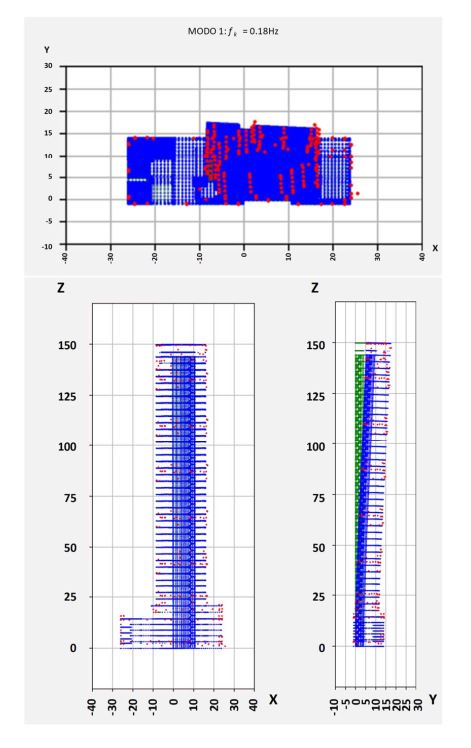Structures are constantly subjected to the forces of the wind, leading to dynamic effects that must be thoroughly evaluated during the structural design phase. The NBR 6123 standard (wind forces on buildings) provides guidelines and methods for determining wind forces on structures based on their dimensions, the topography, and the density of built areas in their location. However, there are cases where a building does not fit within the limits defined by the standard. This can occur if the structure is particularly tall and slender, or if its distinctive shape complicates an adequate assessment of wind incidences and drag parameters. Additionally, the presence and configuration of neighboring buildings can induce complex wind behavior, even if the structure fits within the standard's limits. In such situations, wind tunnel testing becomes essential.
The Paradise Sky Tower, located in Chapecó, Santa Catarina, is a building with a height of 150 meters and floor dimensions of approximately 25 meters by 10 meters. Due to its significant height and slenderness, wind tunnel testing was recommended to determine both the equivalent static forces and the dynamic response of the structure.
A scaled-down model of the building and its surroundings was constructed. This assembly was mounted on a rotating base, allowing the simulation of wind at various incidence angles. Wind pressure on each facade was measured from pressure taps distributed along the model. This approach enabled a much more refined and precise evaluation of the dynamic effects due to wind.
One of the key findings from analyzing the wind tunnel test results for the Sky Tower was the occurrence of significant displacements at the top of the building in the transverse direction to the applied wind, aligned with the structure's smaller dimension. This phenomenon, known as vortex shedding, generates high displacements on the upper floors, potentially causing discomfort for the occupants. Fortunately, since the study was conducted during the structural design phase, we were able to make critical adjustments to the structural model early on. By revising the materials used and the geometry of the structural elements, we significantly increased the building's overall rigidity. These adjustments reduced the tower's sensitivity to vibrations caused by vortex shedding, enhancing the stability and comfort for its users.
The integration of detailed analyses, such as wind tunnel testing, into the structural design process underscores the importance of innovative and proactive approaches in modern civil engineering.

